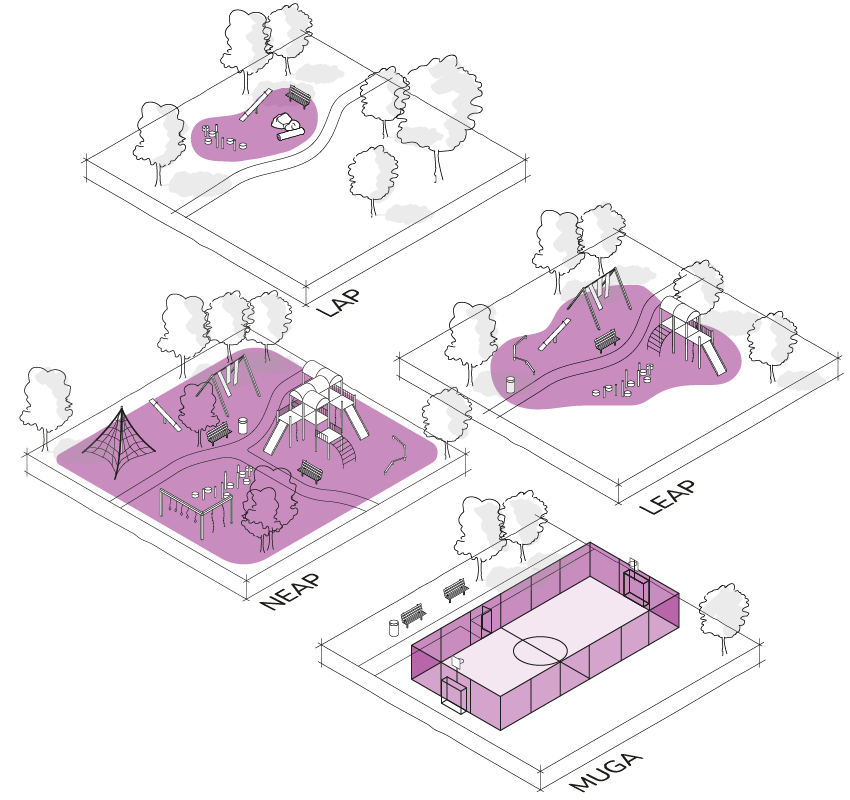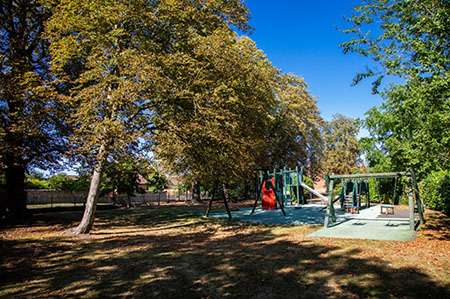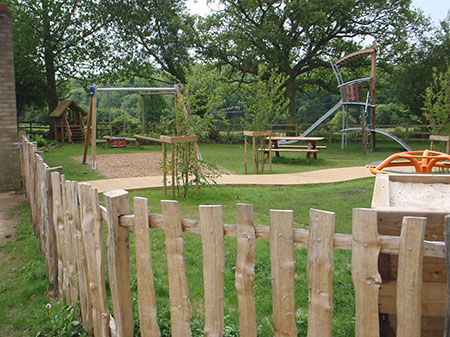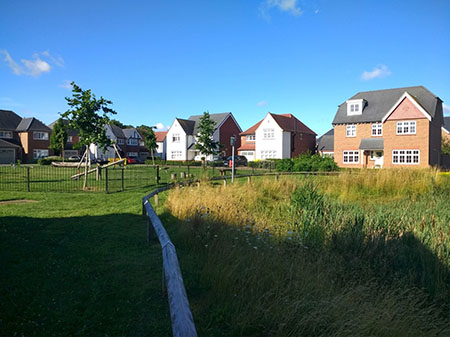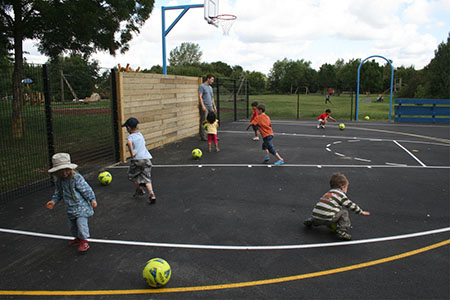Neighbourhood Equipped Area of Play (NEAP)
p71.
This is an area of open space specifically designated, laid out, and equipped for older children (8 to 11 years and older), but potentially with play opportunities for younger children as well. NEAP areas can provide play equipment and a hard surface area for ball games, or wheeled activities, such as roller skating or cycling. NEAPs may provide other facilities such as a ramp for skateboarding, a rebound wall, and a shelter for meeting and socialising. NEAPs can often be co-located with LEAP provision to cover children aged 0 to 11 years old plus older children and young people aged 12 years and over.
Youth Space and Multi Use Games Area (MUGA)
p72.
Older children and young people aged 12 to 18 years often enjoy traditional play activities, such as climbing and swinging, as well as facilities for socialising, performance, fitness, ball games, and wheel sports (UN Convention on the Rights of the Child includes everyone under the age of 18 have the right to play).
p73.
Traditionally, youth provision has been focused on a range of active sports such as: skate parks, BMX tracks, and MUGAs. However youth space needs to be designed to appeal to a much wider range of teenagers, of both sexes, and not be easily dominated by one type of user. Elements that could be included in a youth space are wide ranging, such as: swings, hammocks, high bars, outdoor gyms, bouldering structures, more open (less cage like), and divided areas of MUGAs. A combination of these can ensure one user group cannot dominate, and will encourage a wider range of users. Youth spaces should consider performance spaces, social seating, shelter, elevated areas, and interactive sport and play equipment.
p74.
Youth provision should be an integral part of public open space design. Youth provision should be easily and safely accessed in the evenings. Spaces should be semi-private but be overlooked for ease of informal observation and supervision.
